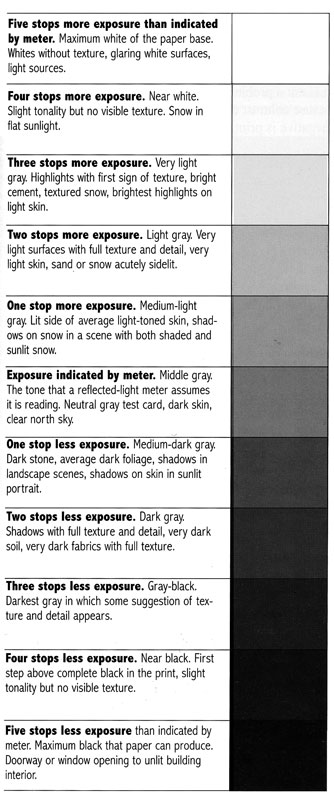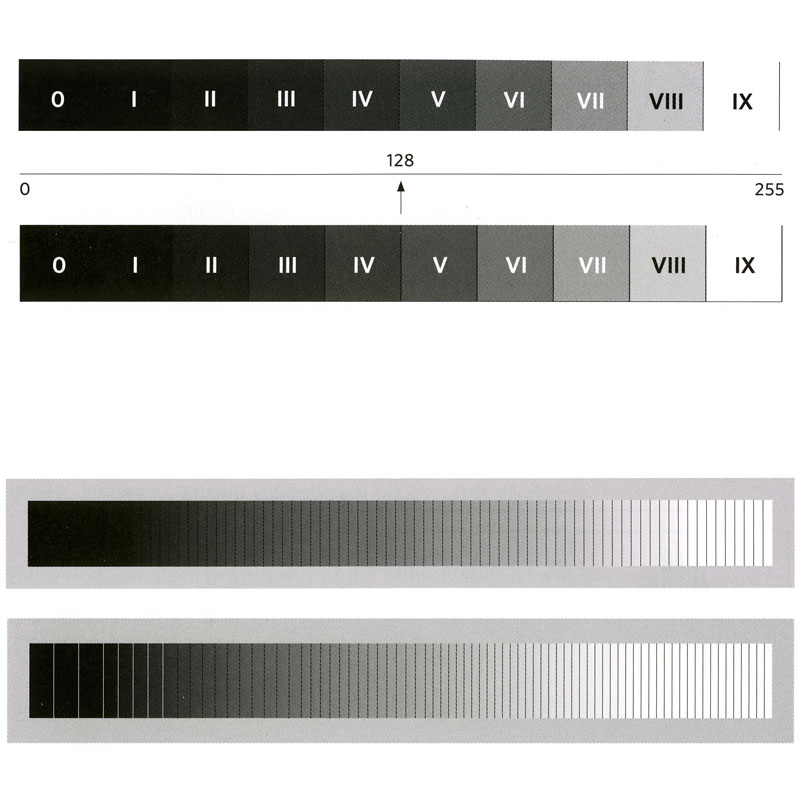Exposure and Equivalency | Exposure and Effect:
- Exposure / Reciprocity Law = Intensity (of the lighting conditions) + the Time in which the light act (or is allowed to expose).
- Equivalent Exposures - combinations of shutter speed and aperture values rendering equal exposures but differing optical effects
- Reciprocity Failure - unproportionate responses by either film or sensor due to unusually short or long exposure times.
- Exposure Control Modes
- Program
- Aperture Priority (Aperture value)
- Shutter Priority (Time value or S)
- Manual
6 Controls which Influence Exposure:
- ISO
- Aperture
- Shutter
- Metering Modes (pattern(muti-point), center weighted, spot)
- Correspond to Focusing Modes
- by effect Tonal Value at point of meter
- Exposure Compensation Value
- White Balance
----------------------
ISO
- sensor sensitivity - lower the iso more light required / longer time value | higher the value less light faster less time required
- (50, 80, 100, 200, 400, 800, 1600, 3200, 25600)
- side effects -lower to higher grain or noise levels respectively
White Balance -
- balances the digital sensor color values with the wavelength of the light source
-
| Color Temperature |
|
Light Source |
|
| 1000-2000 K |
|
Candlelight |
|
| 2500-3500 K |
|
Tungsten Bulb (household variety) |
 |
| 3000-4000 K |
|
Sunrise/Sunset (clear sky) |
|
| 4000-5000 K |
|
Fluorescent Lamps |
 |
| 5000-5500 K |
|
Electronic Flash |
 |
| 5000-6500 K |
|
Daylight with Clear Sky (sun overhead) |
 |
| 6500-8000 K |
|
Moderately Overcast Sky |
 |
| 9000-10000 K |
|
Shade or Heavily Overcast Sky |
 |
Zone System


Av/Aperture:
- Depth of Field
- zone of focus
- range of acceptable focus
- speed of lens
- determined by the largest aperture
- stopping down
- reducing the size of the aperture
- focal length
- the distance between the lens and the focal point at which a sharp image of an object at infinity is formed.
- the distance
between the optical center of a lens and the focal point for an object at infinity
- hyperfocal distance
- at any given f-stop, when the lens is focused at infinity, the distance between the camera and the nearest point of acceptable focus is called the hyperfocal distance
- hyperfocal focusing
- used to achieve maximum depth of field to infinity
- focusing the lens at the 1/2 point between the lens and the hyperfocal distance in order to achieve maximum depth of field
- infinity - anything beyond 50 feet.
- Aperture Priority- user controlled Av/Aperture - shooting mode
Tv/Time Value/Shutter speed:
- Stop action/motion
- Blur
- Panning / panoramming
- pivoting with the motion of the subject.
- camera shake/jitter
- Characteristics which affect blur
- angle of movement
- camera to subject distance
- subject speed
- Flash and stopping motion
- Shutter Priority - user controlled Tv/shutter - shooting mode

